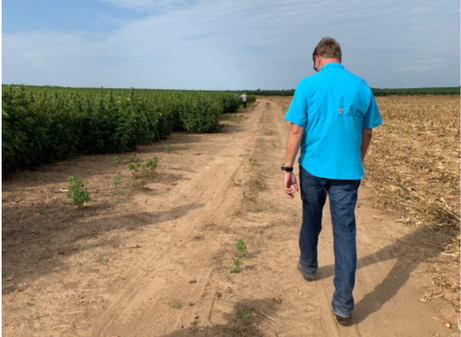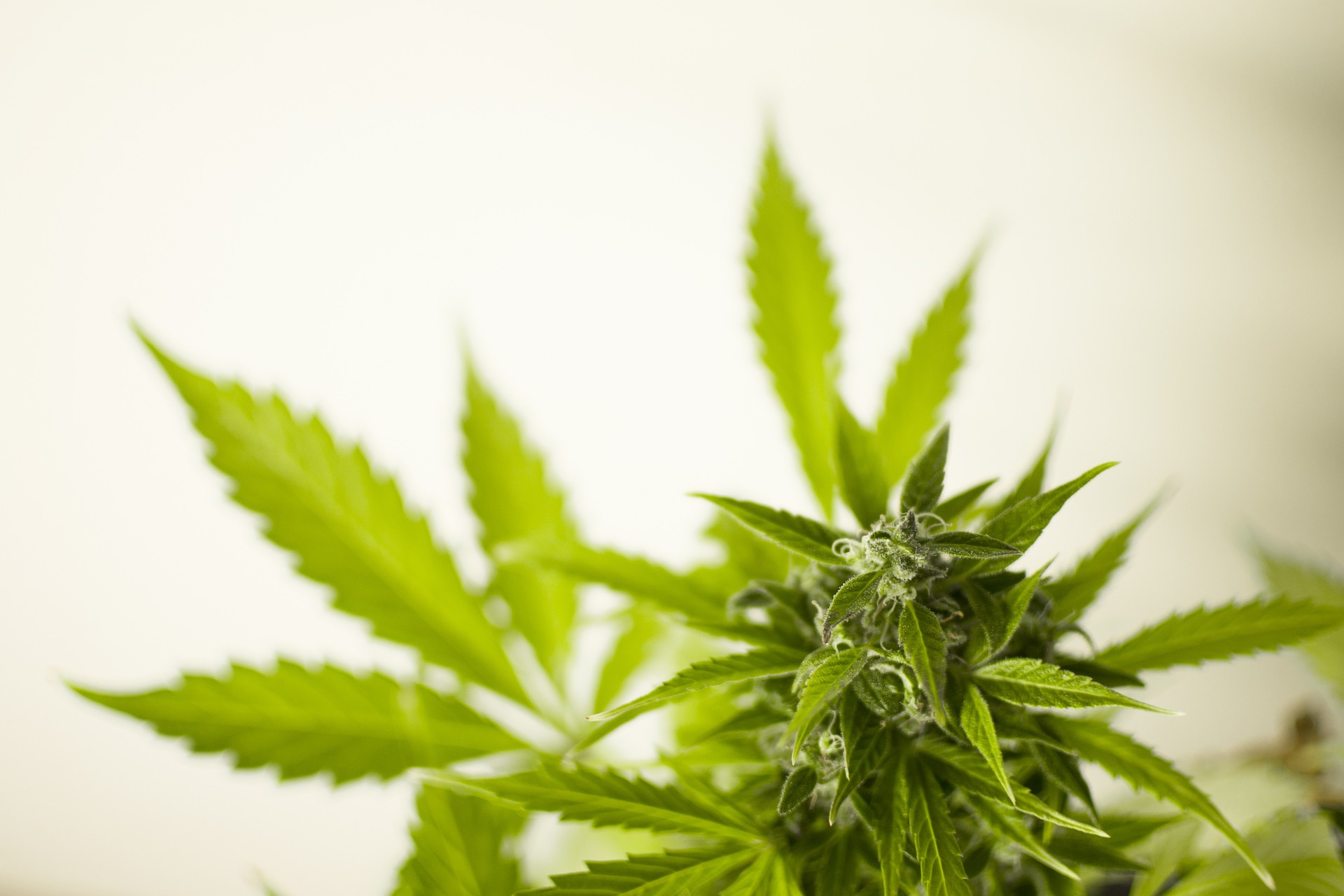
Why Is There a Renewed Interest in Hemp by Textile and Manufacturing Companies?
Previously Published to Benzinga: The following post was written and/or published as a collaboration between Benzinga’s in-house sponsored content team and a financial partner of Benzinga.
The truth is, the interest in hemp by textile and manufacturing companies never really left. The demand has always been there, but legal restrictions needed to be lifted so that hemp could be grown in the U.S. and companies could use hemp in products and materials. In the meantime, U.S. companies relied on imports. In addition to its known uses, new technological discoveries have been made in the use, sustainability and impact of hemp on the environment.
To put it simply, both the fiber and hurd that comes from hemp are used in many different materials and products.
In textiles, hemp is stronger than cotton. For example, Levi Strauss & Co. (NYSE: LEVI) uses hemp in its jeans to keep knees from wearing out. Pound-for-pound, many claim that it’s more than 10 times stronger than steel, allowing car and electric vehicle manufacturers to reinforce door panels and other vehicle parts without adding weight to the finished ride. Ironically, hemp is also biodegradable.
An early supporter of environmental protection, Henry Ford (NYSE: F) often used hemp in his car designs, unveiling an all-cannabis vehicle design in 1941 — despite being in the midst of Prohibition. BMW (OTCPK: BMWYY) is another current example, using hemp-based fibers to strengthen its car paneling.
Hemp could solve the current lumber crisis, with hemp-based materials being cheaper than wood, more readily available and harvested every year. Wood products made from hemp are said to be more beautiful and more solid than that from trees. Hemp is used in the design of hardwood floors and wood paneling, saving contractors thousands of dollars per project for a far more superior product. They’re even using it to create “hempcrete” — a concrete made from biomass post-processing.
Hemp is also naturally rot-, fire- and mold-resistant, as well as low-dust and pest-free.
Although there are strains of hemp that are more specifically grown for fiber and hurd, the current boom in growing is for flower strains for CBD. This has led to an enormous amount of hurd biomass as a byproduct. A few companies are using this byproduct from processing and extraction operations to create pet bedding and lining materials for animals of all sizes. Generation Hemp, Inc. (OTCQB: GENH) happens to be one of these companies.
Maximum Harvest, Limited Deadlines
Generation Hemp, Inc., a Dallas/Fort Worth-based company, is building out a midstream company in the hemp space. This venture came as the highly anticipated byproduct of a merger (M&A) between Energy Hunter Resources and Home Treasure Finders, Inc. Home Treasure Finders was taken over in late 2019 and has since been converted into what’s now becoming the “go-to” processor for drying, cleaning, stripping and storing hemp for farmers and growers within the southeastern U.S.
GenH Halcyon is Generation Hemp’s wholly-owned subsidiary, serving southwest Kentucky, Tennessee, West Virginia, North Carolina, South Carolina, Alabama, and Illinois. It’s the reason Generation Hemp is considered the “dry cleaners of the hemp industry.” This heavy machinery is capable of handling more than 100,000 pounds of wet hemp per day and taking something that is generally 80% to 90% of straight moisture content down to less than 10%.
Since most of the hemp strains grown in the U.S. are dedicated to CBD and other in-demand cannabinoid byproducts, preserving cannabinoid content and keeping terpenes intact is crucial, as certain drying methods and temperatures can be what makes or breaks them. Halcyon’s advanced drying services ensure that plants are handled and processed delicately in order to maximize quality and minimize degradation.
Halcyon’s state-of-the-art cleaning system, located in a 48,000 square foot facility, efficiently and effectively removes hemp stalks, stems and seeds. The screening and filtration system is easily adjusted to meet variable biomass specifications and returned as a highly marketable “homogenized” biomass form within hours of harvest.
The team at Halcyon understands the importance of accurate and verified testing, providing both pre- and post-process Certificate of Analysis (COA) testing to include moisture, CBD (or other target cannabinoids) and THC percentages, on-site.
The U.S. Department of Agriculture (USDA) requires all hemp farmers to have hemp tested on a regular basis. COA testing is done by extraction labs and third-party testing labs in key sectors of the business.
Halcyon provides its customers with verified results in just minutes, ensuring greater speed to market. At one point, receiving a COA from an off-site lab would generally take up to 2 weeks. Regulations around testing requirements have been in constant flux and will be a key factor in how many supply chain operations flesh out. However that other shoe drops, having the ability to test material at the drying and processing stage provides critical insight at a critical point in the process — both for compliance and for determining profitability based on cannabinoid content.
Recycling Biomass Stalks, Disposing Excess through Sustainability
The lack of processing capacity in most regions of the country makes it difficult for growers to get their harvests ready for market. Many farmers and growers still hang-dry their hemp by hand, which requires expensive —and hard-to-come-by — labor, a lot of space and time. The entire process can be weather-sensitive, and the final product still needs a buyer after all is said and done.
In this scenario, many farmers and growers are forced to deal with their buyers directly, which is not always ideal to a farmer or grower, as the hemp supply chain and infrastructure is not as fully developed as other agricultural crops like corn or soybeans. Teaming up with a service provider like Generation Hemp and GenH Halcyon can help connect farmers and growers to buyers and distribution.
Here, the service provider becomes a sort of hub, or conduit, for buyers who know that the facility is in a centralized location. Because the product comes from several different farmers and growers, they know it will be processed for optimal homogenization, clean and consistent all the way through.
This also means that buyers don’t need to scramble to find extraction-ready material for processing or manufacture, and farmers don’t have to scramble to look for a buyer.
Now that farmers and buyers have been paired, what happens with the millions of pounds of hurd biomass that is left over?
Generation Hemp has geared up to make use of this waste stream, transforming it into a valuable commodity
Hurd or shiv, as some call it, is used for creating hemp-based materials for building and industry. Due to its rot-, mold- and fire-resistant properties, it also makes for other amazing uses. Since the flower is what farmers, growers and processors are currently after, the hurd that’s left behind becomes a waste stream product that can quickly become difficult to manage.
There was a time during the Industrial Revolution, for example, when gasoline was simply considered a waste stream product that came from the process of making kerosene. But then one day, John D. Rockefeller and a bright mind in his company found a way to use this pesky gasoline waste. We all know how that turned out.
Now, as cries for the next Green Revolution reach a fever pitch, a handful of companies are beginning to find ways to make use of every single part of the hemp plant. Only this time, the flower plays the part of kerosene, and the hurd is that pesky gasoline.
Processing hemp for flower leads to millions of pounds of hurd biomass each year. Farmers continue to bale and stack it up, but it’s still taking up valuable space.
As it turns out, hemp hurd is becoming a coveted material for animal bedding. According to several studies, it’s considered the healthiest bedding for animals to use. Who knew so many animals would get their best rest on milled hurd from hemp?
This is a game-changer because Generation Hemp takes an already environmentally friendly product and makes it even more sustainable. As a result of this byproduct, production of animal bedding is set to ramp up, and you can expect to see an uptick on the supply-side in the coming months.
Animal bedding may be the lowest hanging fruit for using hemp hurd, but once manufacturers can rely on a consistent supply of U.S. hemp hurd for large-scale manufacturing, and farmers can rely on manufacturers buying hemp for those industrial applications, the use of U.S. hemp hurd (and fiber) will displace imports. Animal bedding will merely be a flagship for companies like Generation Hemp, Inc.
To learn more about hemp, industrial applications and Generation Hemp, visit https://www.genhempinc.com.
The preceding post was written and/or published as a collaboration between Benzinga’s in-house sponsored content team and a financial partner of Benzinga. Although the piece is not and should not be construed as editorial content, the sponsored content team works to ensure that any and all information contained within is true and accurate to the best of their knowledge and research. This content is for informational purposes only and not intended to be investing advice.




